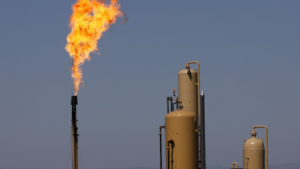1. Biofuels:
Derived from organic matter such as plant materials (e.g., corn, sugarcane, soybeans) and animal fats, biofuels include ethanol, biodiesel, and renewable diesel.
Companies can blend these fuels with or replace conventional gasoline and diesel, offering lower greenhouse gas emissions and reduced dependence on petroleum.
2. Hydrogen:
This often produced through electrolysis of water or reforming of natural gas, can be used in fuel cells to generate electricity to power vehicles and machinery.
Hydrogen fuel cells emit only water vapor and heat as byproducts, making them a clean and efficient alternative to internal combustion engines.
3. Electricity:
Electric vehicles (EVs) are powered by electricity stored in batteries, which can be charged from the electrical grid or renewable energy sources such as solar and wind. EVs produce zero tailpipe emissions, reducing air pollution and greenhouse gas emissions compared to conventional vehicles powered by gasoline or diesel.

4. Natural Gas:
Compressed natural gas (CNG) and liquefied natural gas (LNG) are alternative fuels derived from methane, the primary component of natural gas. Natural gas vehicles (NGVs) offer lower emissions of pollutants such as nitrogen oxides and particulate matter compared to gasoline and diesel vehicles.
5. Hybrid Vehicles:
Hybrid vehicles combine an internal combustion engine with an electric motor and battery pack. By utilizing both gasoline and electricity for propulsion, hybrids can achieve improved fuel efficiency and lower emissions compared to conventional vehicles.
6. Renewable Fuels:
Renewable fuels, such as renewable natural gas (RNG) and renewable diesel, are produced from organic sources such as agricultural waste, landfill gas, and wastewater. These fuels offer similar performance to their fossil fuel counterparts but with lower carbon intensity and reduced environmental impact.

7. Synthetic Fuels:
Manufacturers produce synthetic fuels, also known as e-fuels or synthetic hydrocarbons, through chemical processes that combine hydrogen from renewable sources with carbon dioxide captured from the atmosphere or industrial emissions.
They can use these fuels in existing internal combustion engines and infrastructure, offering a potential pathway to decarbonize sectors such as aviation and shipping.
8. Algae-based Fuels:
Producers derive algae-based fuels from algae biomass cultivated in ponds, bioreactors, or open water systems. Algae can convert sunlight and carbon dioxide into lipids, which producers can process into biodiesel or bio-oil. Algae-based fuels offer the potential for high productivity and minimal land use compared to traditional biofuel feedstocks.
9. Methanol:
Manufacturers can produce methanol, also known as wood alcohol, from renewable sources such as biomass, municipal solid waste, or carbon dioxide captured from industrial emissions.
They can use methanol as a transportation fuel or chemical feedstock. Methanol has lower emissions of criteria pollutants compared to gasoline and diesel.
10.Flex-Fuel Vehicles (FFVs):
Flex-fuel vehicles are designed to run on blends of ethanol and gasoline, such as E85 (85% ethanol, 15% gasoline).

11.Renewable Hydrocarbon Fuels:
Producers create renewable hydrocarbon fuels, also known as drop-in biofuels, from renewable sources such as biomass, algae, or waste materials.
These fuels have molecular structures similar to conventional gasoline, diesel, and jet fuel, allowing existing engines and infrastructure to use them without modification.
By addressing these key areas, stakeholders can accelerate the transition towards a more sustainable, resilient, and inclusive energy system powered by diverse and renewable alternative fuels.
Conclusion
However, Continued collaboration, innovation, and policy support will be essential to overcoming challenges and realizing the full potential of alternative fuels in addressing pressing energy and environmental challenges.

